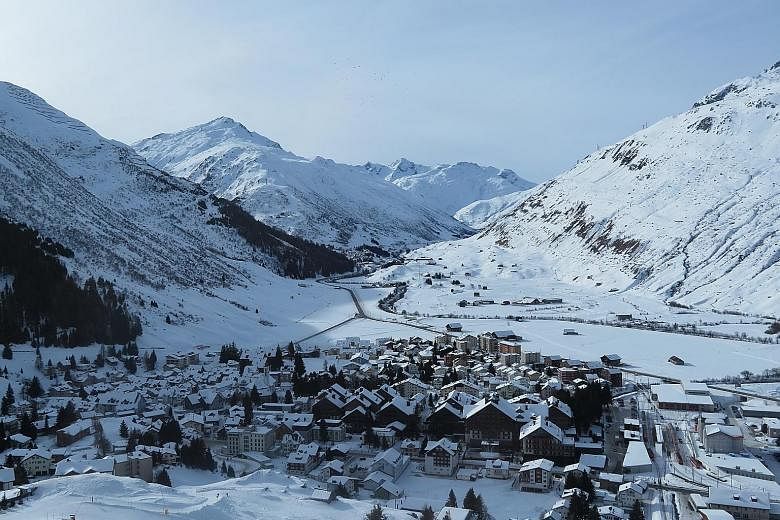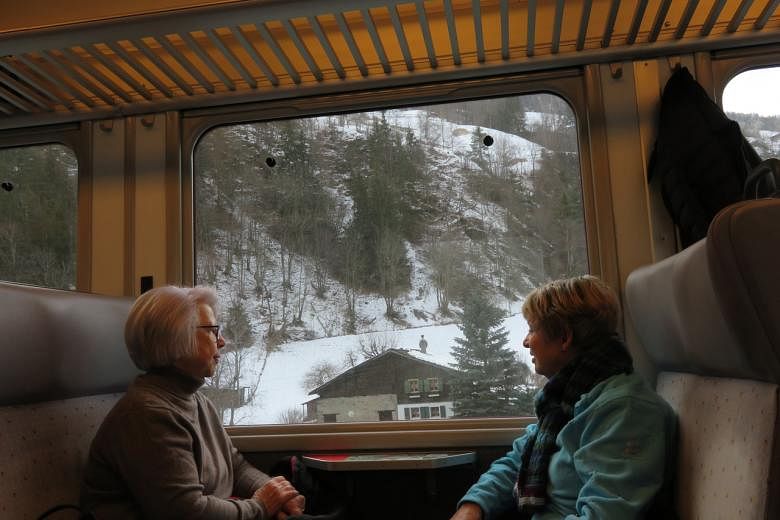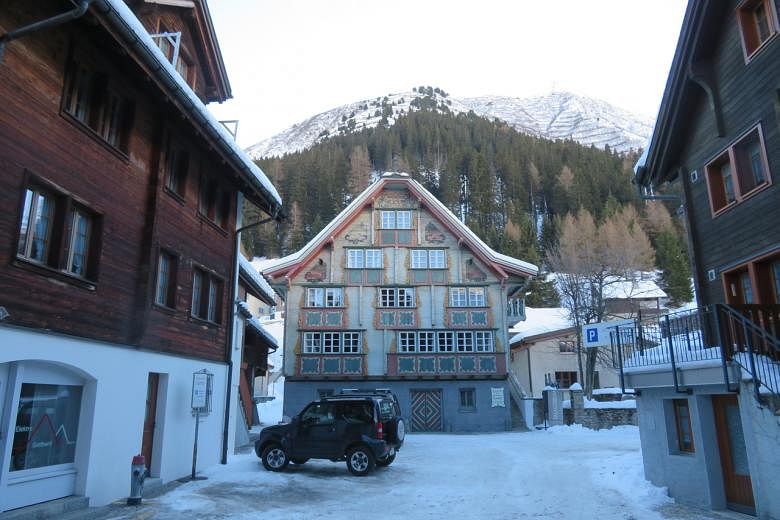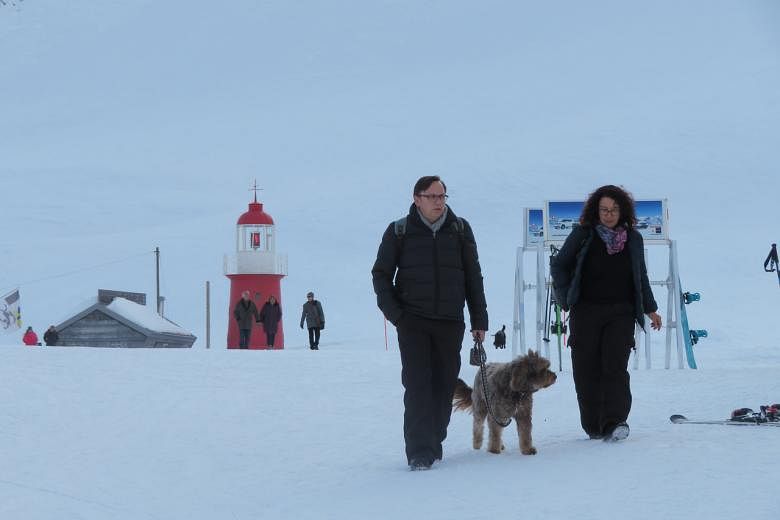I am stomping my way from my hotel to the nearby gondola station. It is really noisy and I feel like Godzilla, but that is how things go when you are wearing ski boots as a beginner and making your way to the slopes.
I am in the town of Andermatt, Switzerland, located in the heart of the Swiss Alps.
It may not be as well known as Saint Moritz or Zermatt, but the ski destination, nestled 1,400m above sea level, certainly has its charms.
It consists of an old town area with traditional wooden Walser-style houses, with the oldest one built in 1620.
A new town area is being developed with residences, hotels, shops and restaurants set to bring a breath of fresh air to the quaint town. When completed in about a decade, it will double the size of Andermatt.
The ski infrastructure here is relatively new, with its ski lifts and gondola systems built in 2014. It is the largest ski area in central Switzerland, says Mr Russell Collins, head of sales at Andermatt Swiss Alps, the developer of the expansion project.
Over three days, I explore Andermatt and the mountains that rise up around it, enjoying activities such as skiing, taking the train and eating non-stop.
A TRAVELLING BAR ON THE RAILS
I hop on an Apres Ski Train - a train with a bar - that takes me through the magical snowscape between the Oberalpass mountain pass and Andermatt.
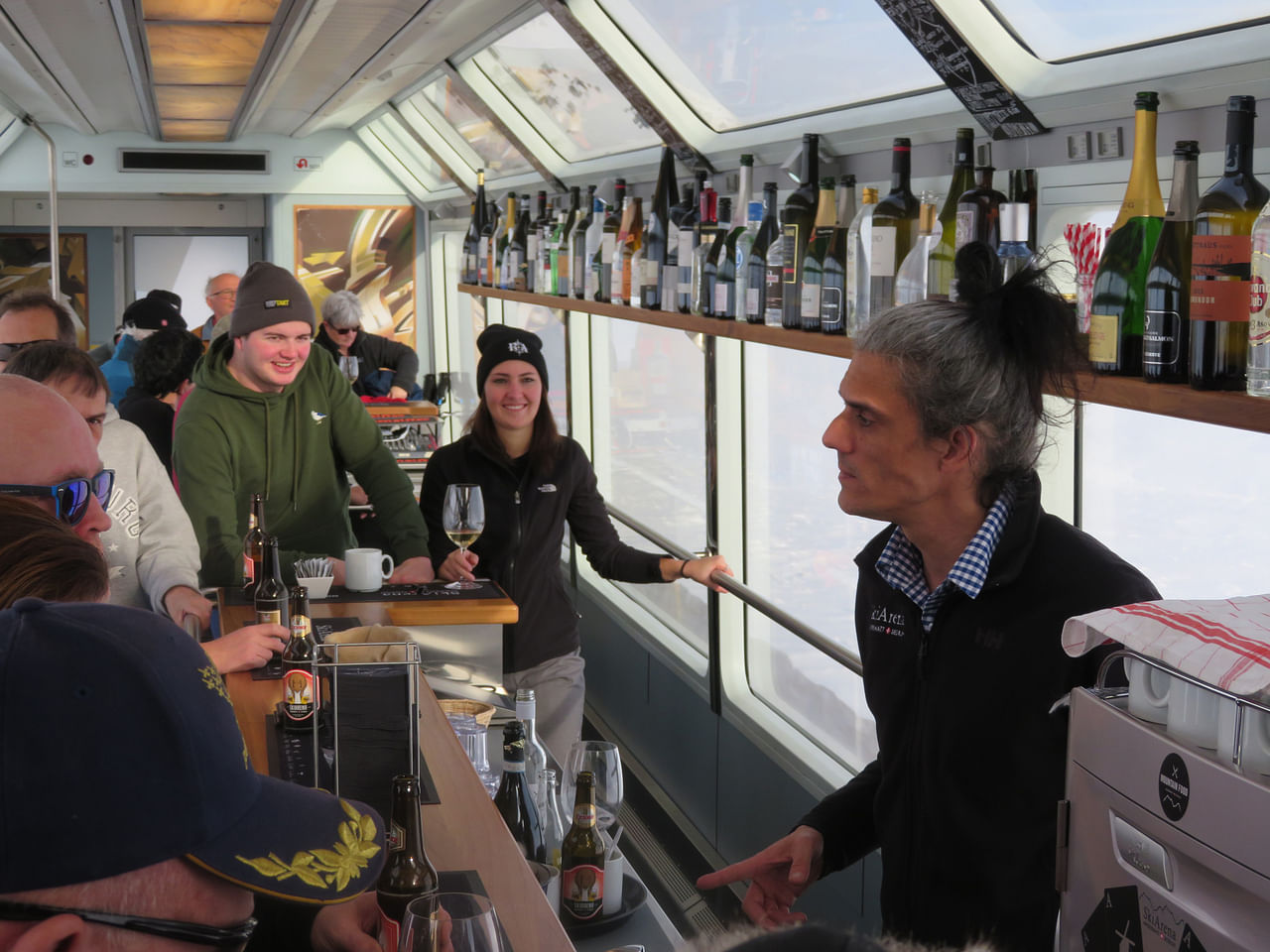
The train is unique to this part of the country. Apres Ski means "after ski" in French. It refers to the Swiss culture of hanging out and enjoying a drink after a day on the slopes.
In this locomotive, you can apres ski without even going to ski. What is not to like?
As I find out, it is quite the party, with music blasting in the carriage throughout the 20-minute ride.
-
GETTING THERE
-
 Swiss Air (www.swiss.com) has a 13-hour direct flight from Singapore to Zurich. From there, it is a 11/2-hour car ride to Andermatt.
Swiss Air (www.swiss.com) has a 13-hour direct flight from Singapore to Zurich. From there, it is a 11/2-hour car ride to Andermatt.Alternatively, take the train from Zurich Flughafen station to Andermatt station. The journey take about 21/2 hours, with changes in between.
TIPS
• Take along a good winter jacket, thermal wear and waterproof gloves. Temperatures can go as low as -10 deg C in winter.
• Wear sunglasses. The sun is especially bright up in the mountains and the snow reflects sunlight, so it is very glaring.
The windows of the roving bar stretch overhead, giving an unobstructed view of the Swiss Alps rolling by. It is like a TV screen with really good graphics, I think to myself while sipping beer.
This train is one of a few unusual things about this relatively unknown ski destination, another being the fact that this place has neither one nor four seasons, but the odd number of three.
Spring typically starts in March. But in Andermatt, it is snowy till around May, before the weather transitions straight into summer, bypassing spring, explains Mr Stefan Kern, head of PR and communications at Andermatt Swiss Alps.
NESTLED IN NATURE
At Oberalppass, a red lighthouse marks the start of the Rhine river, one of four rivers that originate from the mountains above Andermatt, flowing down to the rest of Europe. The other three are the Rhone, Reuss and Ticino rivers.
I am told that the water from the mountaintop flows directly into the taps in Andermatt, fresh and completely untreated. Tap water is served freely in restaurants and cafes in the town.
From its location, Andermatt also has a front-row seat to the effects of climate change.
For example, the peak of the 3,000m-high Gemsstock mountain, which has cult appeal among skiing enthusiasts, is actually a glacier. And it is retreating at an alarming rate, says Mr Kern.
"It is still about 30m thick. But it is melting at a rate of at least 2m a year. This means it will be gone in about 10 years," he says.
To fight this, efforts have been made to preserve it as much as possible, such as covering the glacier with a layer of "fleece" in the warmer months.
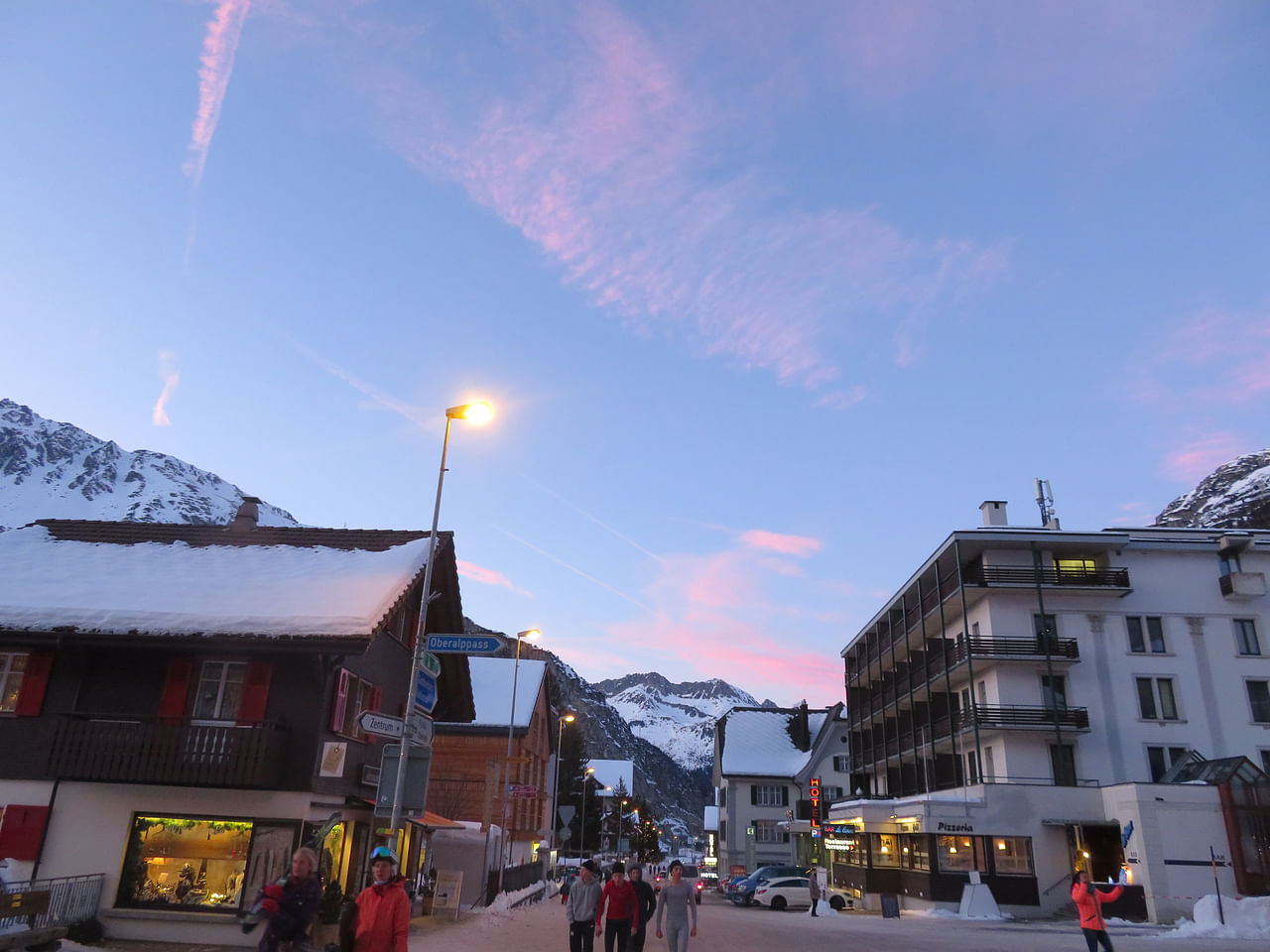
"People come up to Andermatt in the summer because it's not as hot. But it is getting hotter," he says.
The temperature has gone up about one to two deg C in the last decade.
In developing the area, Andermatt Swiss Alps also worked with non-governmental organisations to come up with environmentally friendly options.
For example, the full heating of the project comes from a specially built power plant down in the valley, about 4km away.
"So there is no oil or gas heating in this town. Wood from all over Switzerland is brought by train and burnt there. It heats the water, which is then brought to the town by pipes," he explains.
There are also four gigantic wind turbines atop the nearby Gutsch mountain, which provide about 30 per cent of the energy requirements of Andermatt.
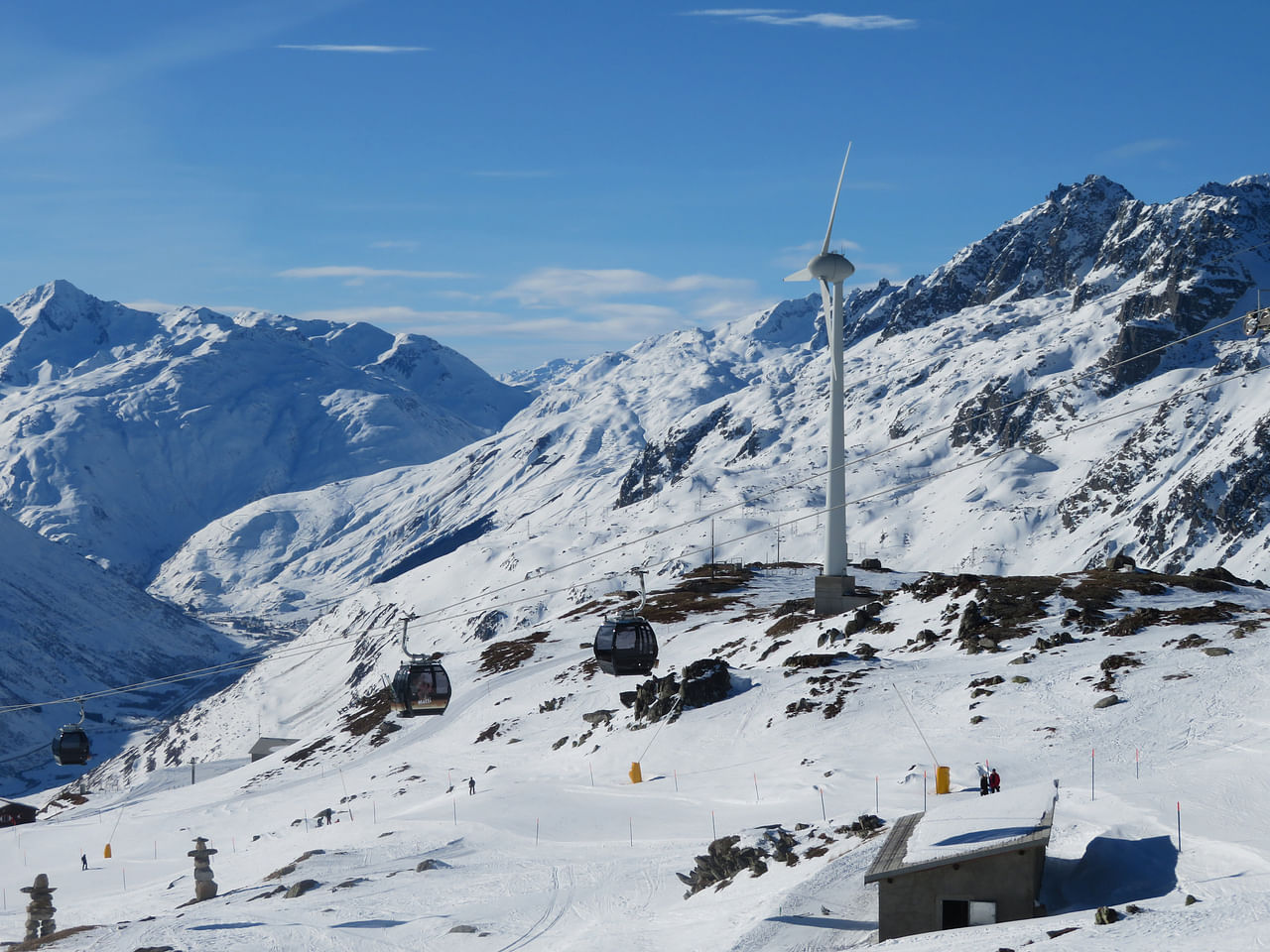
DINING WITH A VIEW
In the Alps, almost everywhere you look, there is a postcard-perfect view. And there are dining options on the mountains.
Atop the 2,344m-high Gutsch mountain, there is the restaurant Gutsch By Markus Neff (www.guetsch.com). Its creations, including beef tartare and spaghettini with black truffle, are made from ingredients sourced mainly locally.
Its outdoor area juts out over the side of the mountain, so diners can enjoy an unobstructed panorama and fresh alpine air.
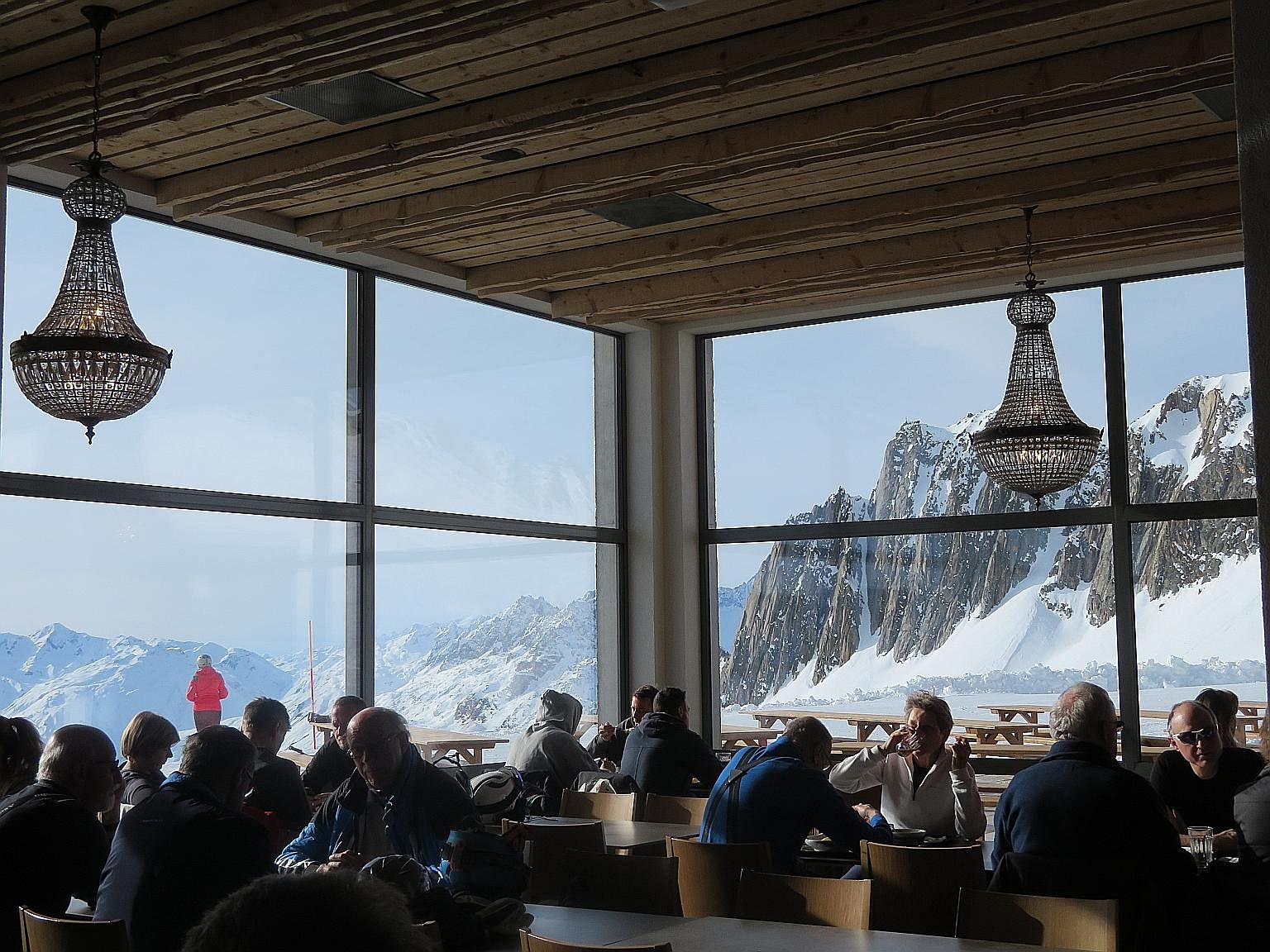
I also dine at a canteen-style eatery on top of Schneehuenerstock, 2,600m above sea level. To get here, take a 20-minute train ride to Oberalppass, followed by a 10-minute gondola ride.
Its macaroni with minced meat served with applesauce, a traditional Swiss dish, is delicious.
The name Schneehuenerstock is clearly a tongue twister and my hosts from Andermatt Swiss Alps say I have to pronounce it fluently before I am allowed down the mountain. I zip my jacket and pull my hood over my head, ready to spend the night there.
Down in the old town, there are multiple cafes, eateries and bars, with local delights such as the classic cheese fondue.
I also visit a whisky bar where Elvis Presley once hung out. The stool he sat on is still on display in a corner of the bar in the The River House Boutique Hotel (Gotthardstrasse 58, 6490 Andermatt).
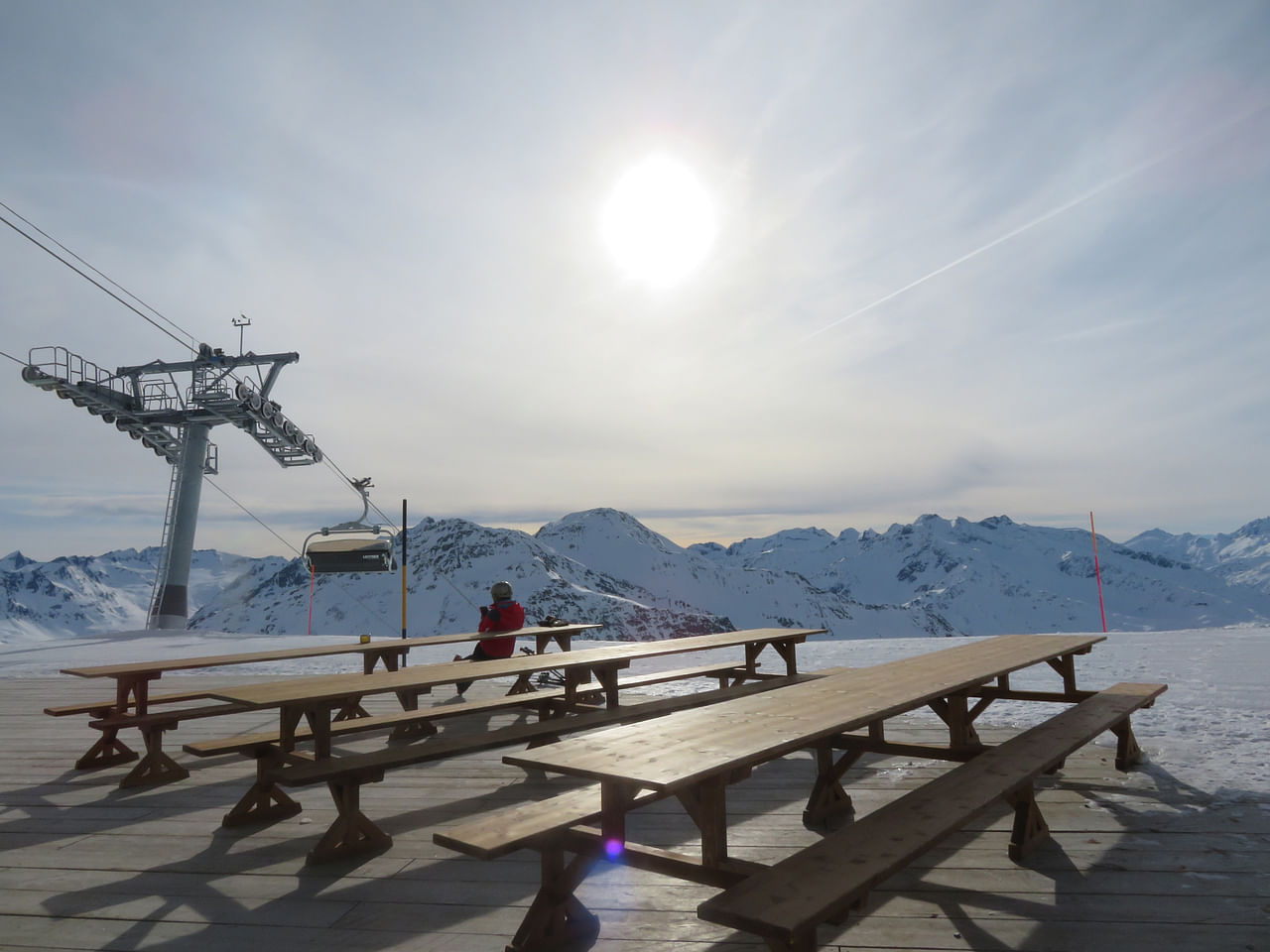
AWAKENING ANDERMATT
The ski slopes of Andermatt come with different gradients and difficulty levels, catering to everyone from beginners, like me, to experts.
There are ski lifts and ski routes connecting Andermatt to other nearby skiing areas, along with hiking trails.
My ski instructor Peter Haab takes me to the beginner slopes halfway up the Gutsch and after running through the basics like turning and braking, I am ready for the main slope.
The start of the run is a steep drop and while I try to control my descent, gravity had its own ideas and I pick up speed involuntarily.
After a terrifyingly exhilarating 10 seconds, I reach the bottom and come to a stop. Peter skis over to me, laughing and saying something about "that look on your face".
From there, the rest of the ride is gentler and as I drift across the snowy landscape, it feels like time has slowed down.
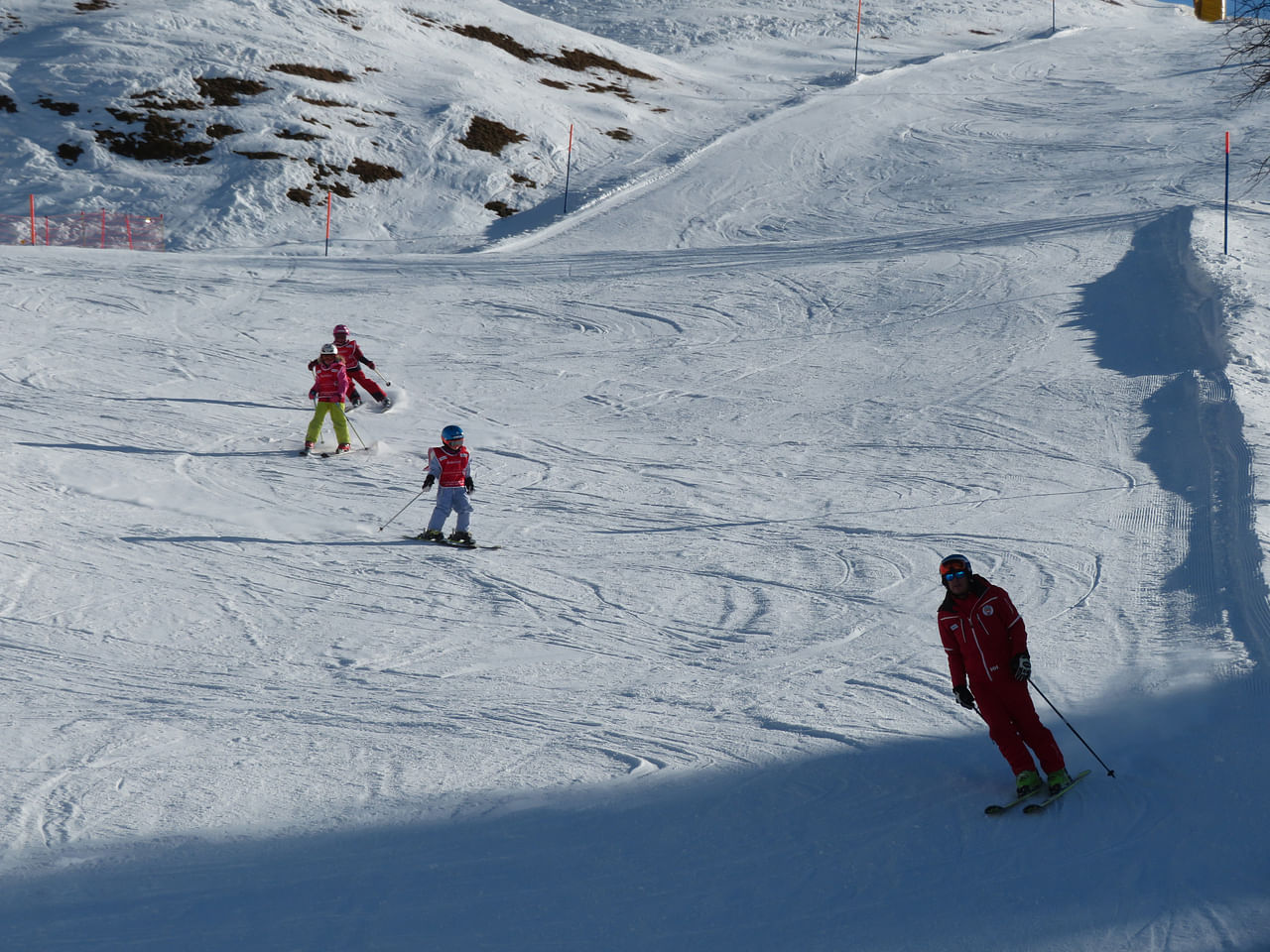
But the area was not always so idyllic for skiers. It was largely used by the military for training purposes.
Mr Collins says the plot of land for the Andermatt project "is a very big land parcel, which is quite unusual in the Alps".
The idea is to modernise the old ski venue, with new facilities such as the ski networks, a golf course and a concert hall.
He adds that the developer is building accommodation for various types of visitors, from luxury lovers to families.
"Everybody who comes here - property owners, holiday-makers - will have a shared love of the mountains and the outdoors," he says.
This hidden gem in the Swiss Alps, typically off the itinerary of tourists visiting Switzerland, is still a bit of a secret while it transforms.
• The writer was hosted by Andermatt Swiss Alps.
